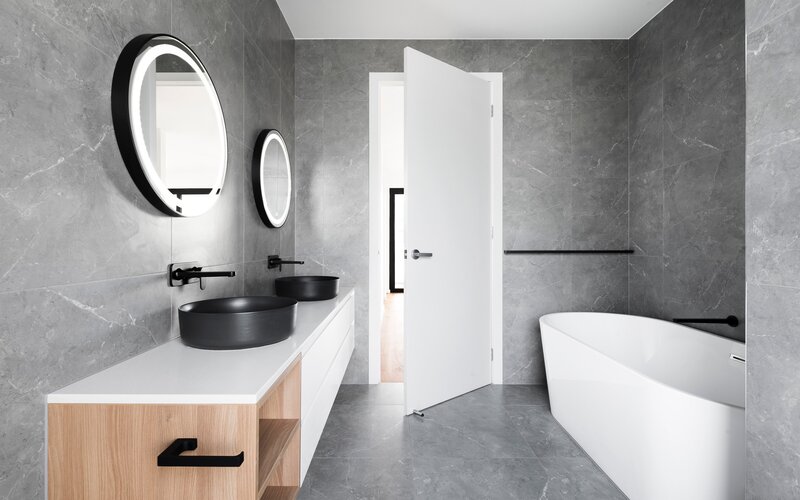This slowed pace of dwelling price growth has diversified market conditions across capital and regional cities according to CoreLogic.
Specifically, Melbourne dwelling prices decreased by 0.1% while Brisbane experienced a surge of 2.9% in December.
Brisbane, Adelaide, and regional Queensland show no sign of slowing just yet according to CoreLogic, with the monthly rate of growth reaching a cyclical high in December.
CoreLogic's Research Director Tim Lawless said these regions show less of an affordability challenge relative to the larger capitals.
"[These regions also have] better support for housing demand with Queensland in particular showing strong interstate migration," Mr Lawless said.
"Additionally, we haven’t seen the same level of supply response seen in other regions, with the trend in advertised supply remaining well below average in these markets."
This is while Sydney and Melbourne recorded their softest rates of growth since October 2020.
"A surge in freshly advertised listings through December has been a key factor in taking some heat out of the Melbourne and Sydney housing markets, along with some demand headwinds caused by significant affordability constraints and negative interstate migration," Mr Lawless said.
Regional markets heating back up
Regional Australian housing values have seen renewed momentum of 2.2% dwelling value growth in December - the highest rate of growth in nine months.
Regional Queensland stood out with housing values up by 2.4%.
However, the strongest regional markets over the past year were in New South Wales (29.8%) and Tasmania (29.5%).
The most popular regional markets saw more than 30% housing value growth over 2021.
Southern Highlands and Shoalhaven in NSW recorded the highest annual rise of 37.7%, followed by Queensland's Sunshine Coast where housing values rose by 33.7%.
This regional uptick is backed by predictions from Propertyology's Head of Research Simon Pressley, who expects regional Australia to be the 'biggest beneficiary' of the housing boom.
Rental prices hiked as affordability is put through the wringer
National rent prices have risen by 9.4%; specifically, house rents lifted by 10.1% while unit rents rose by 7.5% over the past year.
Unit rentals experienced some reprieve due to halted overseas migration and domestic rental preferences, but affordability is diverting back to the unit sector according to CoreLogic.
"In Melbourne, where unit rents fell by -8.5% between March 2020 and May 2021, higher density rental markets are now recording a faster rate of growth than houses, with Melbourne unit rents recording a 1.6% quarterly increase compared to the 0.9% rise seen in house rents," Mr Lawless said.
The tightest rental market was Darwin where rents have risen by 15.2% over the past year, though conditions eased in the second half of 2021.
With the national dwelling values increasing by over 22% while national rents rose by 9.4%, rental yields have fallen as a result.
CoreLogic's housing market predictions for 2022
While 2021 was an 'unprecedented' year for the housing market, 2022 is likely to see a further easing in the pace of capital gains according to CoreLogic.
As international borders reopen, CoreLogic predicts that rental demand is likely to be the 'main beneficiary' rather than home buying demand.
Housing values experienced the fastest rate of growth since the late 1980s, but household income and wages have hardly moved.
Consequently, there are higher barriers to enter the housing market as it is becoming increasingly harder to raise money for a deposit.
CoreLogic predicts that affordability challenges will progressively weigh on housing demand in 2022.
New listings are also picking up which will see stock levels return to normal, and as a result, CoreLogic expects homes will not sell as quickly.
COVID remains the 'biggest wildcard' as Omicron cases surge, but even if restrictions persist, this may result in low interest rates and expansive monetary policy which helped the market in 2021.
Overall, despite some headwinds building for the housing market, CoreLogic predicts that national housing values will continue to rise in the short term.
Advertisement
Buying a home or looking to refinance? The table below features home loans with some of the lowest interest rates on the market for owner occupiers.
| Lender | Home Loan | Interest Rate | Comparison Rate* | Monthly Repayment | Repayment type | Rate Type | Offset | Redraw | Ongoing Fees | Upfront Fees | Max LVR | Lump Sum Repayment | Additional Repayments | Split Loan Option | Tags | Row Tags | Features | Link | Compare | Promoted Product | Disclosure |
|---|---|---|---|---|---|---|---|---|---|---|---|---|---|---|---|---|---|---|---|---|---|
5.79% p.a. | 5.83% p.a. | $2,931 | Principal & Interest | Variable | $0 | $530 | 90% |
| Promoted | Disclosure | |||||||||||
5.74% p.a. | 5.65% p.a. | $2,915 | Principal & Interest | Variable | $0 | $0 | 80% |
| Promoted | Disclosure | |||||||||||
5.84% p.a. | 6.08% p.a. | $2,947 | Principal & Interest | Variable | $250 | $250 | 60% |
| Promoted | Disclosure |
Image by Michelle Longfield on Unsplash

Ready, Set, Buy!
Learn everything you need to know about buying property – from choosing the right property and home loan, to the purchasing process, tips to save money and more!
With bonus Q&A sheet and Crossword!






 Denise Raward
Denise Raward

 Harrison Astbury
Harrison Astbury
 Rachel Horan
Rachel Horan


